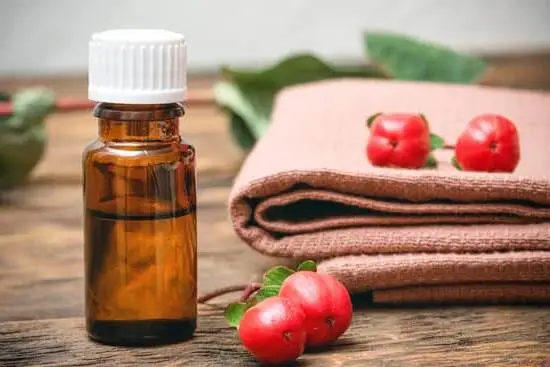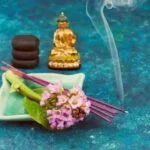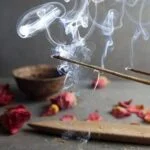Are you looking to enhance your well-being and relaxation at home? If so, delve into the world of DIY aromatherapy oils. Aromatherapy has been used for centuries as a natural way to promote physical, emotional, and mental well-being. In this article, we’ll explore the benefits and uses of DIY aromatherapy oils, including essential oil safety, creating homemade diffuser blends, and where to source quality oils for your projects.
Understanding essential oils is key to unlocking their therapeutic benefits. We’ll discuss different types of essential oils and their unique properties, as well as choosing the right carrier oils for DIY aromatherapy blends. With this knowledge, you can create personalized blends tailored to your specific needs – whether it’s relaxation, stress relief, or added energy.
In addition to exploring the art of blending essential oils and crafting homemade diffuser blends, we’ll also provide tips and precautions for using essential oils safely. By learning more about the healing powers of DIY aromatherapy oils, you can embrace a natural and holistic approach to self-care in your daily life. Stay tuned for our upcoming sections on creating personalized recipes for relaxation and stress relief using DIY aromatherapy oils.
Understanding Essential Oils
When it comes to understanding essential oils for DIY aromatherapy blends, it’s important to have a grasp of the different types and their properties. There are numerous essential oils available, each with its own unique aroma and therapeutic benefits. Some of the most popular essential oils include lavender, peppermint, eucalyptus, tea tree, and lemon, among many others. Each type of essential oil has distinct properties that make them suitable for specific uses in aromatherapy.
For example, lavender essential oil is well-known for its calming and relaxing properties, making it a great choice for DIY aromatherapy blends aimed at promoting relaxation and alleviating stress. On the other hand, peppermint essential oil is known for its invigorating and refreshing scent, which makes it ideal for DIY diffuser blends that aim to boost energy and improve focus.
Understanding the properties of different essential oils is crucial when creating DIY aromatherapy blends. It allows you to tailor your blends to achieve specific therapeutic effects, whether it’s to promote relaxation, relieve headaches, boost concentration, or improve respiratory function. By familiarizing yourself with the different types of essential oils and their properties, you can harness their benefits to support your overall well-being through aromatherapy practices.
In addition to knowing the properties of various essential oils, it’s also important to consider their potential interactions with certain medications or medical conditions when using them for DIY aromatherapy. Some essential oils may not be suitable for individuals with certain health concerns or allergies. Always consult with a qualified aromatherapist or healthcare professional if you have any underlying health issues before using essential oils in your DIY aromatherapy projects.
Choosing the Right Carrier Oils for DIY Aromatherapy Blends
Understanding Carrier Oils
When creating your own aromatherapy blends, it is important to understand the role of carrier oils. Carrier oils are plant-based oils that dilute essential oils and help carry them onto the skin. They are an essential component of DIY aromatherapy as they provide a safe medium for applying essential oils topically.
Best Carrier Oils for Aromatherapy
There are many different carrier oils to choose from when creating your own aromatherapy blends. Some popular options include jojoba oil, sweet almond oil, coconut oil, and olive oil. Each carrier oil has its own unique properties and uses, so it’s important to research and choose the best one for your specific needs.
Considerations When Choosing Carrier Oils
When choosing a carrier oil for your DIY aromatherapy blends, consider factors such as skin type, desired benefits, and shelf life. For example, those with sensitive skin may opt for a lighter carrier oil like apricot kernel oil, while individuals with dry skin may prefer a heavier option like avocado oil. It is also important to consider the scent of the carrier oil and how it will complement the aroma of the essential oils you plan to blend.
By understanding carrier oils and carefully selecting the right ones for your DIY aromatherapy projects, you can create effective and safe blends that cater to your specific needs and preferences.
Essential Oil Safety
Understanding Essential Oil Safety
When it comes to using essential oils for DIY aromatherapy, it’s important to understand the potential risks and safety precautions. Essential oils are highly concentrated and potent, which means that they should be used with caution. Some essential oils can cause skin irritation or allergic reactions, while others may be harmful if ingested. It’s crucial to educate yourself on the proper usage and dilution of essential oils to ensure a safe and enjoyable aromatherapy experience.
Dilution Guidelines
One of the most important safety considerations when using essential oils is proper dilution. Most essential oils should be diluted with a carrier oil before applying them to the skin. This helps reduce the risk of irritation or sensitivity. A common dilution ratio is 2-3 drops of essential oil per teaspoon of carrier oil for adults, and even lower dilutions for children and those with sensitive skin. Always follow recommended dilution guidelines when creating your own DIY aromatherapy blends.
Usage Precautions
It’s also important to be aware of specific usage precautions for certain essential oils. For example, some essential oils are phototoxic, meaning they can cause skin sensitivity when exposed to sunlight. Others may not be safe for use during pregnancy or for individuals with certain medical conditions.
Before using any essential oil in your DIY aromatherapy projects, research its potential side effects and contraindications. When in doubt, consult a certified aromatherapist or healthcare professional for guidance on safe usage practices.
DIY Aromatherapy Oil Recipes for Relaxation and Stress Relief
Creating your own DIY aromatherapy oils for relaxation and stress relief can be a rewarding and therapeutic experience. By combining the right essential oils with carrier oils, you can create blends that promote calmness, relaxation, and overall well-being. Whether you prefer to use these oils in a diffuser, massage oil, or bath soak, there are endless possibilities for creating your own personalized aromatherapy blends.
One popular recipe for relaxation and stress relief is a calming lavender blend. Lavender essential oil is known for its soothing properties and is often used to promote relaxation.
To create this blend, simply mix 6-8 drops of lavender essential oil with 1 ounce of a carrier oil such as sweet almond or jojoba oil. This blend can be applied to pulse points, used in a relaxing massage, or added to a warm bath for an indulgent self-care experience.
Another effective recipe for stress relief is a citrus-based blend featuring essential oils such as bergamot, orange, and grapefruit. Citrus oils are uplifting and energizing, making them perfect for combating stress and fatigue. To make this blend, combine 4-6 drops of each citrus essential oil with 1 ounce of carrier oil. This refreshing blend can be used in a diffuser to brighten your space or added to homemade body scrubs for an invigorating shower experience.
When creating your DIY aromatherapy oil recipes for relaxation and stress relief, it’s important to pay attention to the potency of the essential oils and their individual properties. Experimenting with different combinations and noting their effects on your mood and overall well-being can help you discover the perfect blends that work best for you.
Whether you’re looking to unwind after a long day or simply seeking moments of tranquility in your daily routine, incorporating DIY aromatherapy oils into your self-care rituals can provide valuable benefits for both your physical and mental health.
Creating Homemade Aromatherapy Diffuser Blends
One of the most popular ways to enjoy the benefits of DIY aromatherapy oils is by using a diffuser. These devices disperse essential oil molecules into the air, creating a pleasant and therapeutic atmosphere in your home.
When creating homemade aromatherapy diffuser blends, it’s important to consider the desired effect you want to achieve. Whether you’re looking for relaxation, stress relief, or an energy boost, there are specific essential oil combinations that can help you achieve your desired outcome.
When choosing essential oils for your homemade diffuser blends, it’s important to consider the properties of each oil and how they work together. For relaxation and stress relief, popular essential oils include lavender, chamomile, and bergamot. If you’re looking for an energy boost, consider using peppermint, eucalyptus, or citrus oils like lemon or orange. Experimenting with different combinations can help you find the perfect blend that suits your needs.
To create a homemade aromatherapy diffuser blend, start by adding a few drops of your chosen essential oils to water in your diffuser. The number of drops will depend on the size of your diffuser and the strength of the aroma you prefer. It’s best to start with a small amount and adjust as needed. Remember to always follow the manufacturer’s instructions for your specific diffuser to ensure safe and effective use.
| Essential Oil Combination | Effect |
|---|---|
| Lavender + Chamomile | Relaxation and Stress Relief |
| Peppermint + Eucalyptus | Energy Boost |
| Bergamot + Orange | Mood Upliftment |
The Art of Blending Essential Oils
When it comes to blending essential oils, one important tip is to start with a clear intention. Consider what you want to achieve with your blend – whether it’s relaxation, focus, or energy – and choose your oils accordingly. For example, lavender and chamomile are great for calming and relaxation, while peppermint and eucalyptus are invigorating and refreshing.
Another important factor to consider when blending essential oils is the concept of top, middle, and base notes. This refers to the volatility of the oils – top notes are the most volatile and provide the first impression of the scent, while base notes are grounding and have a longer-lasting aroma. By understanding these notes and how they work together, you can create well-balanced blends with depth and complexity.
In addition to tips for blending essential oils, there are also some tricks of the trade that can take your DIY aromatherapy projects to the next level. For example, using a pipette or dropper can help you measure small quantities accurately for precise blending. Additionally, keeping a journal of your blends and their effects can help you refine your skills over time and create blends that work best for your needs.
| Essential Oil | Therapeutic Properties |
|---|---|
| Lavender | Calming, Relaxing |
| Chamomile | Soothing, Stress-Relief |
| Peppermint | Invigorating |
| Eucalyptus | Refreshing |
Where to Source Quality Essential Oils for DIY Aromatherapy Projects
When it comes to sourcing quality essential oils for your DIY aromatherapy projects, it’s important to do your research and choose reputable suppliers. Quality is key when it comes to essential oils, as inferior or diluted oils will not provide the therapeutic benefits you are looking for. Here are some options for where to source high-quality essential oils for your DIY aromatherapy blends:
- Specialty Health Stores: Many health food stores and specialty shops carry a variety of essential oils. Look for stores that have a good reputation and carry brands that prioritize quality and purity.
- Online Retailers: There are many online retailers that specialize in essential oils. Look for companies that provide detailed information about their sourcing, production methods, and testing processes. This can help ensure you are getting a pure product.
- Direct from Producers: Some essential oil producers sell their products directly to consumers. This can be a great way to ensure the oils are coming from a trusted source and have been produced with care.
It’s also important to look for essential oil suppliers who prioritize sustainability and ethical practices. By choosing companies that are transparent about their sourcing methods and support ethical labor practices, you can feel good about the products you are using in your DIY aromatherapy projects.
Finally, consider attending local farmers’ markets or craft fairs where artisans may be selling their own homemade essential oils. This can be a great way to connect with local producers and find unique, high-quality oils for your aromatherapy blends.
By taking the time to source quality essential oils for your DIY aromatherapy projects, you can maximize the therapeutic benefits of your blends while supporting responsible producers in the process.
Conclusion
In conclusion, the world of DIY aromatherapy oils is a vast and inspiring one, offering numerous benefits and uses for those seeking natural remedies and holistic wellness. By understanding the different types of essential oils and their properties, as well as choosing the right carrier oils for DIY blends, individuals can harness the power of aromatherapy for relaxation, stress relief, and overall well-being.
It’s important to keep in mind essential oil safety when embarking on DIY aromatherapy projects, following tips and precautions to ensure a positive experience. With a wide range of recipes available for relaxation and stress relief, individuals can create their own homemade aromatherapy diffuser blends to suit their personal preferences and needs.
The art of blending essential oils involves its own set of tips and tricks, allowing for creativity and customization in DIY aromatherapy. Whether sourcing quality essential oils from reputable suppliers or experimenting with creating their own blends from scratch, individuals can truly embrace the healing powers of DIY aromatherapy oils to enhance their physical, emotional, and mental well-being.
As more people explore this natural approach to wellness, they will no doubt discover the many benefits that DIY aromatherapy oils can offer in their everyday lives.
Frequently Asked Questions
Can You Make Your Own Aromatherapy Oils?
Yes, it is possible to make your own aromatherapy oils at home. You can create custom blends using a carrier oil, such as jojoba or coconut oil, and adding essential oils for scent and therapeutic benefits.
What Is the Best Oil to Make Homemade Essential Oil?
The best oil to make homemade essential oils is typically a high-quality carrier oil that is odorless and easily absorbed by the skin. Some popular choices include jojoba oil, sweet almond oil, or fractionated coconut oil.
How Do You Make Essential Oils From Scratch?
Making essential oils from scratch involves extracting the volatile compounds from plant material through methods such as steam distillation, solvent extraction, or cold pressing. This process requires careful attention to detail and an understanding of the specific botanical ingredients being used.

Are you looking for a natural way to improve your health and wellbeing?
If so, aromatherapy may be the answer for you.





